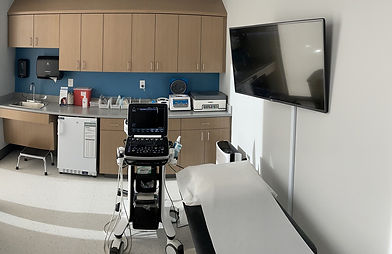Quad & Patellar Tendonitis Pain Treatment in Raleigh, NC
Tendonitis (or tendinitis) is inflammation or irritation of a tendon, which is an important part of the muscle that attaches to the bones of the body. Tendonitis can be acute or chronic, and will sometimes develop after an injury. It is most often caused by repetitive actions performed during the day, which is a form of overuse.
Quadriceps Tendonitis Pain
-
Causes: Overuse, repetitive jumping, running, or heavy lifting, particularly in sports like basketball, volleyball, and track.
-
Symptoms:
-
Pain above the kneecap (anterior knee pain)
-
Swelling or tenderness in the area of the quadriceps tendon
-
Pain worsens with activities like running, squatting, or jumping
-
Difficulty with knee extension or full range of motion
-
-
Risk Factors: Weak or imbalanced quadriceps muscles, sudden increase in activity, poor technique during exercise, or previous knee injuries.
Patellar Tendonitis Pain
-
Location: Inflammation of the patellar tendon, which connects the kneecap (patella) to the shinbone (tibia).
-
Causes: Overuse and repetitive stress, especially from jumping activities (e.g., basketball, volleyball) or running.
-
Symptoms:
-
Pain just below the kneecap (often on the front of the knee)
-
Swelling and tenderness over the patellar tendon
-
Pain that increases with activities like jumping, squatting, or climbing stairs
-
Pain when pressing on the tendon or when the knee is extended against resistance
-
-
Risk Factors: Overuse, sudden increase in activity, poor biomechanics, weak or imbalanced quadriceps, and improper footwear.


TREATMENT OPTIONS FOR QUAD & PATELLAR TENDONITIS PAIN
As with most orthopedic conditions, patients will often begin with a combination of physical therapy, anti-inflammatories, ice and rest (and in some cases, steroid injections).
When these methods are no longer effective, Carolina Nonsurgical Orthopedics offers the latest in cutting-edge treatments to reduce pain and get you back to the activities you enjoy. Some of these innovative alternatives to surgery include Orthobiologics and Regenerative Medicine treatments, such as:
-
Platelet-Rich Plasma (PRP) Injections: Use your own platelets to reduce inflammation and accelerate healing.
-
Prolotherapy: Uses dextrose (sugar water) in place of steroid to reduce pain and promote healing.
-
Shockwave: A non-invasive therapy that uses impulses to treat chronic pain and repair tissue.
-
Ultrasound-Guided Tendon Fenestration: Using the ultrasound we can target the tendon with the needle to stimulate healing of the diseased portion.
See the full list of conditions and treatments offered at Carolina Nonsurgical Orthopedics.
READ MORE ABOUT QUAD & PATELLAR TENDONITIS
Causes of Quad Tendonitis Quad tendonitis is primarily caused by overuse or repetitive stress placed on the quadriceps tendon. Activities that involve frequent jumping, running, or heavy lifting put excessive strain on the tendon, leading to microtears and inflammation. Sports like basketball, volleyball, and track are common contributors due to the explosive movements required. A sudden increase in activity intensity or volume without proper conditioning can also trigger tendonitis. Additionally, muscle imbalances, such as weak quadriceps or tight hamstrings, can increase stress on the tendon. Poor technique during physical activities, such as improper landing mechanics, can exacerbate the condition. Age-related factors, such as decreased tendon flexibility, also play a role, as tendons become less resilient over time. Causes of Patellar Tendonitis Patellar tendonitis, or jumper’s knee, is caused by repetitive strain on the patellar tendon, which connects the kneecap to the shinbone. It is commonly seen in athletes involved in sports that require frequent jumping or sudden changes in direction, such as basketball, volleyball, and soccer. The constant stress on the tendon from these movements leads to inflammation and microscopic damage. Improper training techniques, inadequate warm-up, or rapid increases in intensity can also lead to the condition. Other factors like poor biomechanics, weak quadriceps, and tight muscles contribute to uneven load distribution, placing additional stress on the patellar tendon.


WHY CAROLINA
NONSURGICAL ORTHOPEDICS
-
All Providers are BOARD CERTIFIED and Specially Trained in Nonsurgical Orthopedics
-
Over 50,000+ and Counting Procedures Performed
-
Procedures Performed with Ultrasound Guidance for Accuracy and Safety
-
Local and Independent Practice That is NOT a Franchise
-
Discounts for Service Members, Teachers, and Public Servants
-
Serving Raleigh Since 2013
.png)
